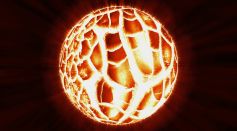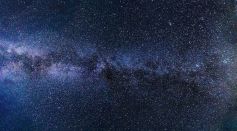Tags: Neutron stars
Magnetar SGR 1935+2154 Structure, Glitch May Be Among Reasons for Unexplainable Fast Radio Bursts [Study]
Crashing Neutron Stars Could Solve the Hubble Trouble, Provide Clue in Measuring the Expansion of the Universe

Nuclear Pasta's Profound Impact on Dead Stars Could Reveal Untold Secrets on How They Evolve

Neutron Stars Create 'Perfect' Explosion in Space, Forming Senseless Symmetrical Sphere

Ultra-Rare Binary Star System That Could Trigger Kilonova Detected 11,400 Light-years From Earth

Celestial Object Blazes Through the Galaxy at 4 Million Kmph, Astronomers Say

Neutron Stars Structure Resembles Chocolate Pralines, With Stiff Mantle and Soft Core [Study]

Mysterious Dark Cosmic Anomaly Discovered Hovering Across Milky Way Might Be the Smallest Black Hole in Astronomical History

Black Hole or Neutron Star? Unknown 'Free-Floating' Compact Object in Milky Way Discovered Through Gravitational Microlensing

Magnetar Model Simulation Demonstrates How Mysterious Fast Radio Bursts Originate

Cosmic Cookie Monster Eats Fellow Star In Recent Discovery
Study Says Neutron Star Collisions Produce More Heavy Elements Than Neutron Stars and Black Hole Merging

Short Gamma-Ray Bursts Originate From a Dying Star; Super Short GRB Recorded From Andromeda
Generating Antimatter by High-Intensity Lasers Possible by Producing Plasma-Level Energy Similar to Neutron Star
Black Holes, Neutron Stars Merge: Astrophysicists' 'First-Ever' Confirmed Merger Detection
Scientists Spend 6,000 Hours in Searching for Gravitational Waves from Neutron Stars

Researchers Find Novel Method of Analyzing the Densest Star Systems

Neutron Star Collision's Gravitational Waves Detected by LIGO
NASA Launches NICER; The First Ever Mission To Study Neutron Stars from the International Space Station
NASA To Have Its Neutron Star Mission For The First Time
Most Popular

Largest Known Volcanic Aquifer Discovered Beneath Oregon's Cascades

New 'Supergiant' Sea Bug Found in South China Sea, Named After Darth Vader

Mediterranean Sea Was Refilled by a Catastrophic Flood Millions of Years Ago

Mysterious Cosmic Waves That Sound Like Birds Detected in Unexpected Space Region





